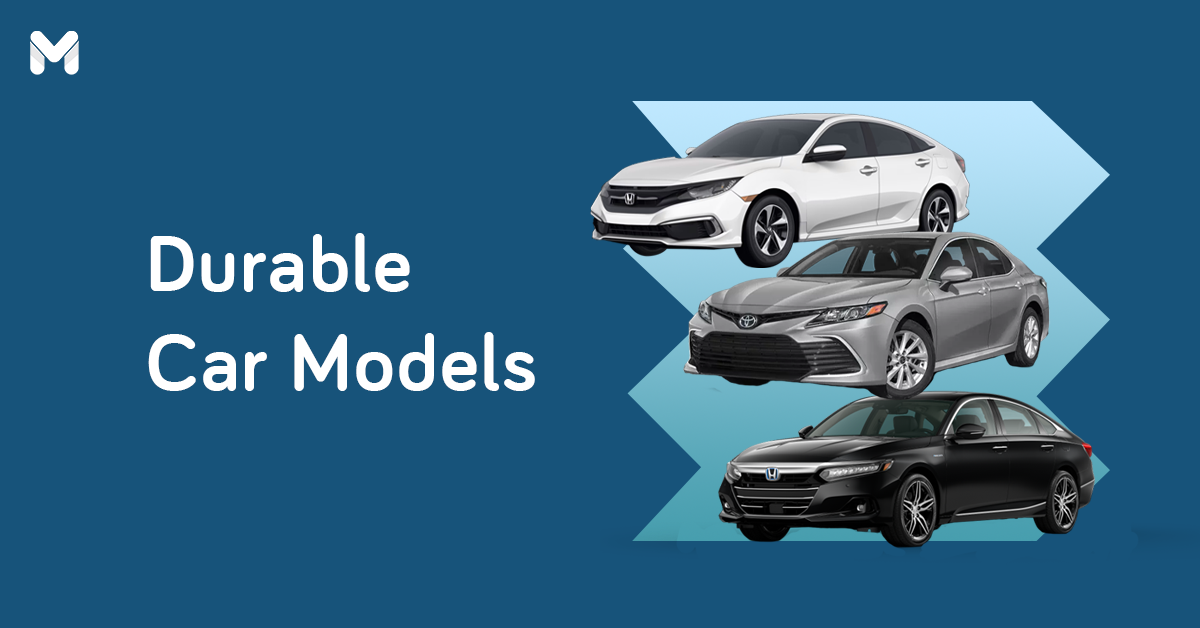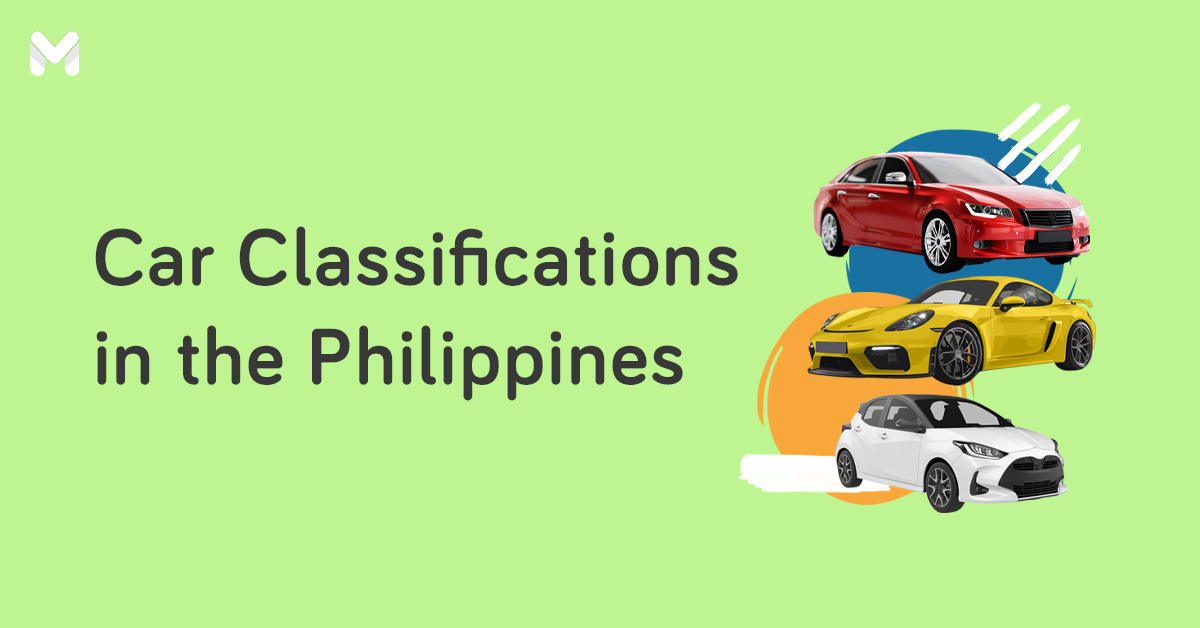Even if there are price rollbacks every now and then, you can’t deny that car fuel is still expensive. A lot of motorists stress themselves over extending the life of the gas in their tanks. If you don’t want to deal with these issues anymore, an electric car is obviously a practical alternative.
An electric vehicle or EV is a solid option, but you need to check if getting one will actually suit your lifestyle. We’ve come up with a comprehensive guide that will help you understand electric vehicles in the Philippines. We’ve also provided a few EV choices should you decide to take this route.
What are Electric Vehicles in the Philippines?
Electric vehicles or EVs are vehicles that don’t use gasoline. Instead of a gasoline tank, a large battery powers their motors. Since they run on batteries, you simply need to connect them to an electrical source in order to refuel them. Yes, it’s very much like charging your smartphone or laptop.
Are there electric cars in the Philippines? Are electric cars allowed in the Philippines? Thankfully, yes. But the number of models is limited.
Things are looking up for the EV industry, though. For one, President Ferdinand Marcos Jr. has approved the temporary reduction of tariffs on EVs and spare parts to 0%. This is expected to encourage motorists to consider EVs.[1]
There is also the EV Industry Development Act (EVIDA), a roadmap to boost the commercialization of electric vehicles in the Philippines. Certain measures include the development of charging stations and the manufacturing of components, among others. Furthermore, EVIDA mandates the government and companies to meet the EV 5% quota on their vehicle fleets.[2]
What is the Difference Between Hybrid Cars and Electric Vehicles in the Philippines?
Understandably, it’s easy to confuse a hybrid car with an e-vehicle in the Philippines. After all, both depend on electricity. But there are obvious differences between them.
An EV is purely electric. It solely relies on its battery to run. It’s as simple as that.
Meanwhile, a hybrid vehicle has a gasoline engine paired with at least one electric motor. It can choose between the two power sources or even combine them depending on the driving requirements. Moreover, a hybrid car doesn’t need an external charging point, as it already charges its own battery.
What are the Pros and Cons of Electric Vehicles in the Philippines?
-Feb-14-2023-03-44-46-3916-AM.png?width=674&height=449&name=Pics%20for%20blog%20-%20600x400%20(4)-Feb-14-2023-03-44-46-3916-AM.png)
If you’re seriously considering getting an e-vehicle in the Philippines, you need to weigh its advantages and disadvantages. Here are the important things you should take note of.
Benefits of Electric Vehicles in the Philippines
👍 They’re Energy-Efficient
Compared to conventional cars, EVs are more energy-efficient. Thanks to the EV’s smart system, only 15% to 20% of energy is lost when you drive it. It also uses regenerative braking to recapture and reuse energy that is usually lost when braking.[3]
👍 Your Home is Your Own Fuel Station
You don’t have to worry about exorbitant gas prices ever again. If your EV runs out of juice, you can simply charge it at home. Some EV batteries can reach 60% to 80% charge in a matter of minutes.
👍 They’re Easier to Maintain
Electric cars in the Philippines are easier to maintain than gas-powered cars. When you own an EV, you won’t have to deal with oil changes, spark plug changes, and the upkeep of combustion-related parts.
👍 They’re Environment-Friendly
Cars that rely on a combustion system produce emissions that are harmful to the environment. Purely electric cars, on the other hand, have no direct emissions since they’re powered by electricity. And since EVs run quietly, they don’t contribute to noise pollution.
Read more: 20 Most Fuel-Efficient Cars in the Philippines
Drawbacks of Electric Vehicles in the Philippines
👎 They’re Expensive
Electric vehicles in the Philippines come with a hefty price tag. Wondering how much is an electric car in the Philippines? You may not even see a model that starts below ₱1 million. In contrast, you can already buy a conventional car if you have a budget of around ₱600,000.
👎 Recharging Stations are Rare
EVs are new in the Philippines, which means charging stations are scarce. This leaves you no choice but to charge your car at home—which means higher utility bills. If you don’t want to run out of charge, you’ll also have to plan all your trips in advance.
👎 They Have Shorter Driving Ranges
Entry-level EVs have short driving ranges, meaning you can cover less distance between charges. Some can pass only about 200 kilometers per day. This dilemma, together with the lack of public charging stations, makes EVs less suitable for road trips.
👎 Charging Takes Time
Some electric cars in the Philippines take 5 hours to a day to reach a full charge. This is a nuisance, especially if you have last-minute travel plans. Some models may have a fast charging feature, but recharging them still takes about 30 minutes to 2 hours.
Top Electric Vehicles in the Philippines in 2023
To manage your expectations, only a few brands offer electric vehicles in the Philippines. Below are some of the most noteworthy models:
BYD S1 EV

- Body type: Crossover
- Seating capacity: Five
- Transmission: Automatic
- Performance: 94 hp and 180 Nm
- Driving range: 300 km
- Charging time: About 2 hours (fast) / About 7 hours (regular)
- Price: ₱2 million
Chinese car brand BYD is known for its range of electric vehicles. It entered the subcompact crossover market with the S1 EV. The silhouette of this model will remind you of other popular subcompact crossovers, such as the Ford EcoSport, the Mazda CX-3, and the Kia Stonic.
The S1 EV churns out decent power, measuring 94 hp and 180 Nm. Safety and security features include airbags for the driver and the front passenger, electronic brake distribution, electronic door locks, and speed-sensing door locks.
WM Motor W5

- Body type: SUV
- Seating capacity: Five
- Transmission: Automatic
- Performance: 214 hp and 315 Nm
- Charging time: About 30 minutes (fast) / About 8.5 hours (regular)
- Price: ₱2.54 million
Weltmeister is another Chinese carmaker with a reputation for making high-quality EVs. If you’re looking for a stylish 4-wheel electric car in the Philippines, the brand’s Motor W5 is worth checking out. As a five-seater car, it’s ideal for both young professionals and small families.
Inside the car, you’ll be treated to stylish and functional creature comforts, such as leather seats, a leather steering wheel, electric adjustable seats, speakers, and a navigation system, among others. Its beauty is coupled with a powerful performance. With 214 hp and 315 Nm of torque, this EV helps you conquer the city roads with ease and finesse.
The Motor W5’s fast charging feature is pretty good, too. Its battery can reach 30 to 80% of charge in 30 minutes. A 100% charge, meanwhile, takes about 8.4 hours.
Nissan LEAF

- Body type: Hatchback
- Seating capacity: Five
- Transmission: Automatic
- Performance: 148 hp and 320 Nm
- Driving range: 311 km
- Charging time: About 7.5 hours (fast) / About 5 hours (regular)
- Price: ₱2.798 million
One of the best-selling electric vehicles in the world, the Nissan LEAF screams youth and adventure. Its sleek and modern design makes the car a must-have for every young urbanite.
Advanced features include adaptive cruise control, keyless entry, touchscreen infotainment system, and Apple Carplay/Android Auto integration. Every ride is also comfortable, thanks to its automatic climate control, plush fabric upholstery, and heater.
For its road performance, the LEAF has a driving range of 311 km. Its impressive torque of 320 Nm ensures smooth acceleration. With a quick push of its start button, you can fire up your car.
When it comes to safety, the LEAF is equipped with airbags for the driver and the front passenger, stability control, electronic door locks, speed-sensing door locks, cruise control, and parking sensors for both front and rear parts.
Hyundai IONIQ 5

- Body type: Crossover
- Seating capacity: Five
- Transmission: Automatic
- Performance: 168 hp and 350 Nm
- Driving range: 384 km
- Charging time: About 18 minutes (fast) / About 18.5 hours (regular)
- Price: Starts at ₱3.068 million
The Hyundai IONIQ 5 is an electric vehicle in the Philippines with a futuristic design language. After its debut in 2021, this sleek crossover SUV bagged three awards at the 2022 World Car Awards: World Car of the Year, World Electric Vehicle of the Year, and World Car Design of the Year.
Expect longer rides as the IONIQ 5 can reach 384 km on a single charge. The higher trim, on the other hand, can run up to 451 km. It can produce a power output of 158 hp and 350 Nm, making for smooth drives.
The IONIQ 5’s interior is just as sleek as its exterior. The white leather seats are eco-processed and mainly treated with plant oil extractions. The dashboard, steering wheel, and door panels are coated with bio paint. Meanwhile, this 4-wheeled electric car’s soft furnishings are clad in textiles made of sustainable fibers such as wool and even PET plastic bottles.
Read more: 10 of the Most Durable Car Models
BYD E6

- Body type: MPV
- Seating capacity: Five
- Transmission: Automatic
- Performance: 121 hp and 450 Nm
- Driving range: 415 km
- Charging time: About 2.5 hours (fast) / About six hours (regular)
- Price: ₱4.2 million
The E6 is BYD’s entry into the MPV segment of EVs. While intended for families, the E6’s design isn’t too homely, a characteristic typical of MPVs. Instead, it boasts a modern and upscale exterior reminiscent of high-end minivans, such as the Kia Carnival and the 2023 Honda Odyssey.
While definitely big and heavy, it can run smoothly and efficiently, thanks to its 121 hp 450 Nm of torque. The same power output enables the E6 to run at a top speed of 140 km/h. This electric MPV has a slew of advanced features, such as cruise control, parking sensors for both front and rear areas, a push start button, and a touchscreen multimedia system.
BMW iX3

- Body type: SUV
- Seating capacity: Five
- Transmission: Automatic
- Performance: 286 hp and 400 Nm
- Driving range: 460 km
- Charging time: About 32 minutes (fast) / About 7.5 hours (regular)
- Price: ₱4.59 million
The BMW iX3 is one of the electric cars available in the Philippines that sits on the high-end spectrum. Its performance is something you can’t contest—for one, it has a driving range of 460 km, which spells longer road trips in between charges. It also boasts 286 hp and 400 Nm of torque, allowing you to dominate both city highways and provincial expressways.
This BMW iX3 suits those who are looking for a sporty auto loaded with smart features. It has adaptive cruise control, keyless entry, an engine start button, a touchscreen multimedia system, and even a Harman Kardon HiFi loudspeaker system.
Jaguar I-Pace

- Body type: SUV
- Seating capacity: Five
- Transmission: Automatic
- Performance: 395 hp and 696 Nm
- Driving range: 470 km
- Charging time: 12.7 hours
- Price: ₱7.9 million
The I-Pace is Jaguar’s first electric performance SUV. While it’s an SUV, it performs like a sports car, as evidenced by its unbelievably powerful output—395 hp and 696 Nm! These specs guarantee quick acceleration and a pleasurable driving experience.
As you’re driving a Jaguar, you’ll surely find people doing a double take. The exterior is streamlined and highly aerodynamic, ensuring a low drag.
Meanwhile, its interior is nothing short of luxurious. At the heart of the cabin, you’ll see a floating console, giving the car a high-tech feel. Its Cabin Ionization feature improves air quality by neutralizing odor and minimizing bacteria and air pollution.
Kia EV6

- Body type: SUV
- Seating capacity: Five
- Transmission: Automatic
- Performance: 320 hp and 605 Nm
- Driving range: 528 km
- Charging time: 7.2 hours
- Price: To be announced
Kia’s SUVs and crossovers always garner good reviews from critics and motorists. In 2021, the Korean carmaker added another unit to its acclaimed roster. Enter the EV6.
Power is EV6’s middle name. Its performance boasts 320 hp and 605 Nm, figures usually churned out by sports cars.
It has an impressive driving range of 528 km, which means you can cover longer distances when the battery is fully charged. Its 800V ultra-high speed charger refuels your car up to 80% in 18 minutes and up to 100 km in less than five minutes.
Inside, you’ll find comfort in temperature-controllable seats. If you’re carrying extra cargo, you can fold the back seats and convert them into a 1,300-liter storage space.
Final Thoughts
The electric car industry shows promise, especially now that there is an electric vehicle law in the Philippines. Yes, the prices of electric vehicles in the Philippines can be hefty, but their benefits may outweigh your initial investment in the long run. You won’t have to buy gas ever again, meaning you won’t contribute to pollution.
There may be some drawbacks, but you can address them with proper planning. If you’re seriously considering electric vehicles in the Philippines, talk to a friend or a relative who already owns one. Draw insights from their experience so you can arrive at a wise decision.
Sources:
- [1] Marcos OKs Temporary Zero-Tariff Policy for EVs (CNN, 2023)
- [2] Increasing Adoption of Electric Vehicles in the Philippines (BusinessWorld, 2022)
- [3] Where the Energy Goes: Electric Cars







_1200x350.png?width=751&height=219&name=UB_PL_Generic_2_(Jan_2025)_1200x350.png)



